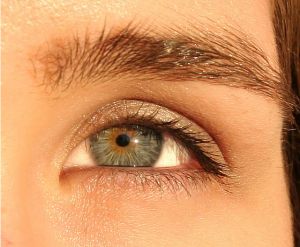Why Do We Have A Blind Spot In Our Eyes?
For many years it was commonly assumed that the world we perceive was produced solely through our eyes, and it was not until Edme Mariotte’s discovery of the so called ‘blind spot’ in the 1660s that we began to realise that perhaps it wasn’t just our eyes doing all the work.
In fact, quite a large proportion of what we see is produced by our brains; our eyes send a thoroughly incomplete report of our field of vision through the optic nerves and our brains ‘create’ the image before us... now there’s something to think about next time someone tells you that you have no imagination.

A consequence of this process is that all human eyes have a ‘blind spot’, but how do they work, and where is ours?
Why do blind spots occur?
Blind spots exist because of the way our eyes are constructed. Vision is produced by reflected light entering the pupil and hitting the retina behind it. This, in turn, stimulates light-sensitive proteins on the optic disk which send the message through the optic nerve and onwards to the brain. Our brain then picks up the signals and produces an image of what we see before us - all before we have the chance to bat an eyelid... pretty neat.
The problem though is the location of the optic nerve. In order for our retina to send information through the nerve, the two need to be linked together and as a consequence the spot in which the two join contains no photoreceptor cells required for picking up light. This spot constitutes the ‘blind spot’ we see (or rather, don’t see as our other eye handily makes up for it).
How can we find our blind spot?
Well, I could tell you that you can find it at around 12–15° temporal and 1.5° below the horizontal, though if that’s as much use to you as it is for me then it’s not going to help you much.
The easiest way to find it is through easily accessible images online – try simply searching for ‘blind spot test’ and one should crop up. Generally they consist of two dark shapes on a light background and ask you to cover one eye and stare at one of the two shapes. At a certain distance the other shape should fall into your blind spot and disappear. Amazingly, if you were to look at, say, a brick wall with a street sign on it for the first time and the sign happened to be in your blind spot, then your brain would simply ‘plaster over it’ with more brick because it would have no prior knowledge of it ever being there.
In reality, having a blind spot most commonly makes little to no difference to our perception. What it does do though is highlight how truly astounding our vision process really is.
Rob writes articles about eyewear and eyecare for leading glasses provider Direct Sight.
More to Read:
Previous Posts:








